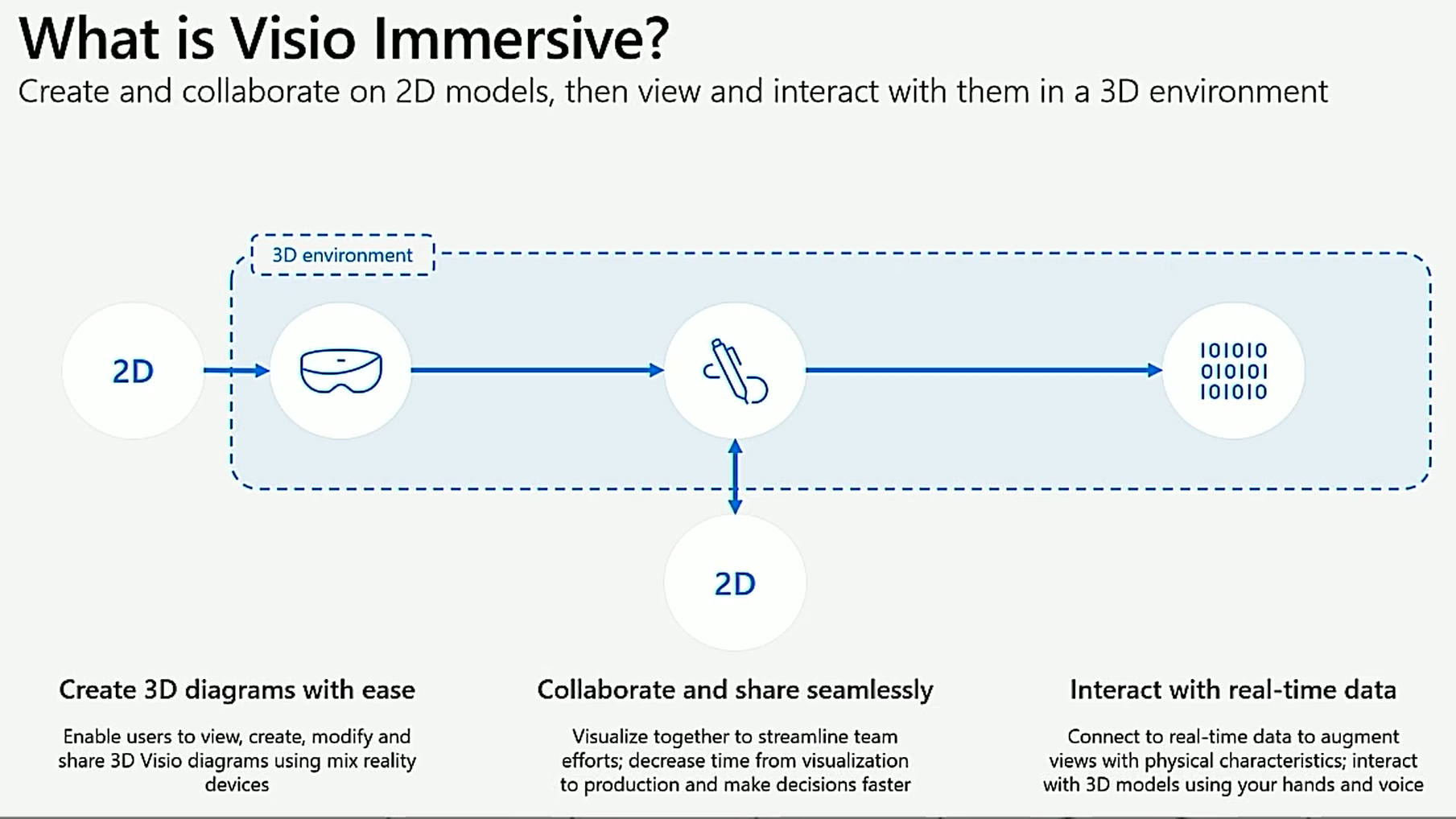
I used to be a building architect that worked with 3D modelling, and then I worked for a CAD company that sold expensive systems much more easily when its 3D capabilities where demonstrated, rather than the then revolutionary database-linking was shown. The reality was that the 3D was barely used in practice because it was seen as a nice to have, rather than an essential. The data-linking to 2D was its core capability, but it was difficult to setup and customise. It was the ability of Visio graphics to link to data, and the ease with which it could be customised, that caused me to switch to using Visio back in the 90’s.
We have come a long way since then, and Microsoft have stated that Mixed Reality is one of its three main bets, along with Artificial Intelligence and Quantum Computing. So, at MSIgnite we saw many previews of the virtual future, including:
Intro to Microsoft Layout
Visio Immersive: Visio in 3D and Mixed Reality
The first video explains the difference between Augmented Reality, Mixed Reality, and Virtual Reality very well. It also introduces the preview add-in for Visio that allows you to export diagrams into the 3D world.
The second video demonstrates how the 3D export from Visio works along with a couple of example immersive demos of a factory floor and an office. Visio is used to diagram more than the measured world, so it is just as easy to export a network diagram, process flows or organisation charts, for example.
The far right of the diagram above from the Visio session shows the intent to provide overlaying data in these 3D environments. Now this could be big, and provides an easy way to create a digital twin.
Exporting to 3D from Visio is not new, for example the excellent 3D Visioner, but the might of Microsoft will be stiff competition.
I haven’t got an MR headset yet, so I am hoping that there will be some flash sales soon….